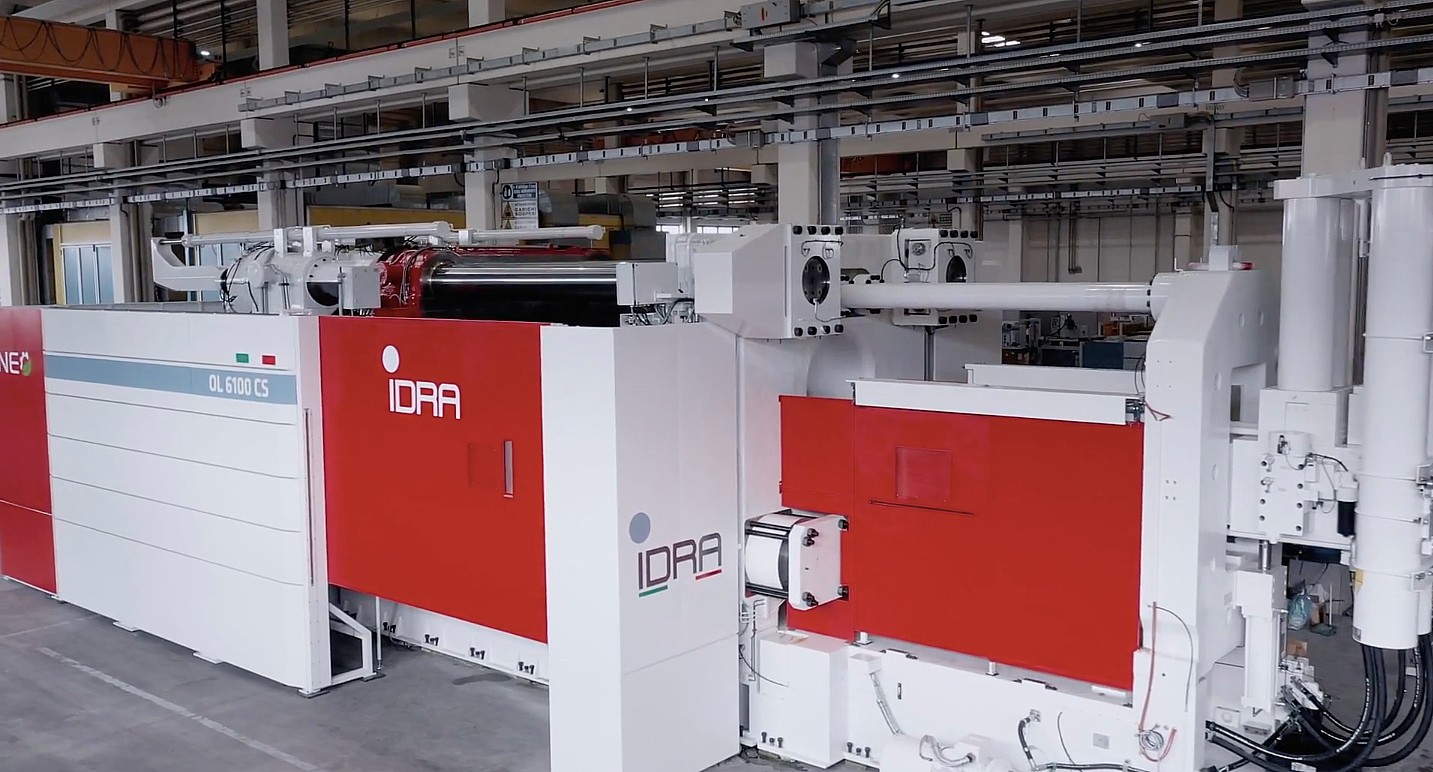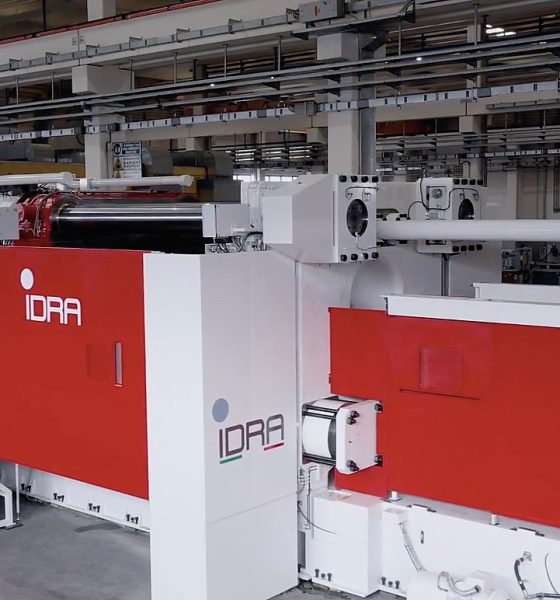

News
Tesla is partnering with a little-known casting company for Giga Press development
Tesla is partnering with Exco Technologies Limited, a Canadian company that specializes in designing and developing dies, molds, assemblies, and casting for automotive companies, the company’s CEO confirmed on an Earnings Call earlier today.
Tesla has long had a focus on manufacturing efficiencies, and arguably the most efficient, and most popular, was the introduction of the Giga Press. The Giga Press is a massive casting machine developed by Italian company IDRA, which helps Tesla cast the chassis and bodies of its all-electric vehicles in a swift, efficient, and non-time-consuming manner. Tesla has worked with IDRA to develop massive Giga Press machines that will be used at Gigafactory Texas and Gigafactory Berlin. There are already Giga Press machines working at Tesla’s Fremont factory in Northern California.
Tesla begins Giga Press manufacturing at Fremont factory, first sighting in action
Now it appears that Tesla’s partnership for casting and molding technologies is going far beyond IDRA. Earlier today, Exco Technologies held its Q3 2021 Earnings Call, where it detailed how Tesla is revolutionizing the manner of automotive manufacturing throughout the entire sector. CEO Darren Kirk said (via Seeking Alpha):
“One key trend that will continue to benefit Exco is the increasing size in complexity of die-cast aluminum components. Tesla has really pushed the envelope on this front using massive Giga Presses, which are much larger die-cast machines than those used previously. This enabled Tesla to cast entire sub frames of the vehicle in one shot with Giga castings, rather than assemble numerous stamped metal components in the body shop, creating significant space and manufacturing efficiency gains. The tooling required to facilitate this process is very large and extremely complex, limiting the number of players able to compete effectively. Our Castool division is already the primary supplier of all shot and tooling for Tesla’s Giga Presses globally. This provides a clear indication of the depth we have in the design and know-how required to meet the challenges of the industry. We expect traditional OEMs will follow Tesla’s lead in using this larger die-cast machines as they transition to an EV future.”
Kirk said that its Castool division, which is a casting and stamping entity owned by Exco, is already supplying Tesla’s Giga Presses with shot-end tooling parts. Kirk stated that he expects Exco’s relationship with Tesla to continue to thrive, especially as Gigafactory Texas and Gigafactory Berlin are concerned.
Kirk also indicated that Exco is involved with Tesla through “all of its divisions,” but he wouldn’t detail explicit evidence that would show how Tesla is being helped by Exco, other than with shot-end tooling. Peter Sklar, an analyst at BMO Capital asked how the two companies were working together, and Kirk stated, “Well, I am not going to speak to whose providing those molds today, but I will say that all of our divisions are involved with Tesla at some level. And they are an important and growing customer across the board, and we see significant opportunity to expand on that.”
Casting could perhaps be Tesla’s biggest advantage as it continues to ramp up manufacturing and assembly efforts at its facilities. Casts for each of its vehicles can be made in a matter of a few seconds, effectively revolutionizing the way automotive bodies are made. Tesla has also shown that casting will play a pivotal role in the company’s decision to move to a structural battery pack, which will increase safety and vehicle rigidity in the event of an accident.
I’d love to hear from you! If you have any comments, concerns, or questions, please email me at joey@teslarati.com. You can also reach me on Twitter @KlenderJoey, or if you have news tips, you can email us at tips@teslarati.com.

Elon Musk
Elon Musk and Tesla AI Director share insights after empty driver seat Robotaxi rides
The executives’ unoccupied tests hint at the rapid progress of Tesla’s unsupervised Robotaxi efforts.

Tesla CEO Elon Musk and AI Director Ashok Elluswamy celebrated Christmas Eve by sharing personal experiences with Robotaxi vehicles that had no safety monitor or occupant in the driver’s seat. Musk described the system’s “perfect driving” around Austin, while Elluswamy posted video from the back seat, calling it “an amazing experience.”
The executives’ unoccupied tests hint at the rapid progress of Tesla’s unsupervised Robotaxi efforts.
Elon and Ashok’s firsthand Robotaxi insights
Prior to Musk and the Tesla AI Director’s posts, sightings of unmanned Teslas navigating public roads were widely shared on social media. One such vehicle was spotted in Austin, Texas, which Elon Musk acknowleged by stating that “Testing is underway with no occupants in the car.”
Based on his Christmas Eve post, Musk seemed to have tested an unmanned Tesla himself. “A Tesla with no safety monitor in the car and me sitting in the passenger seat took me all around Austin on Sunday with perfect driving,” Musk wrote in his post.
Elluswamy responded with a 2-minute video showing himself in the rear of an unmanned Tesla. The video featured the vehicle’s empty front seats, as well as its smooth handling through real-world traffic. He captioned his video with the words, “It’s an amazing experience!”
Towards Unsupervised operations
During an xAI Hackathon earlier this month, Elon Musk mentioned that Tesla owed be removing Safety Monitors from its Robotaxis in Austin in just three weeks. “Unsupervised is pretty much solved at this point. So there will be Tesla Robotaxis operating in Austin with no one in them. Not even anyone in the passenger seat in about three weeks,” he said. Musk echoed similar estimates at the 2025 Annual Shareholder Meeting and the Q3 2025 earnings call.
Considering the insights that were posted Musk and Elluswamy, it does appear that Tesla is working hard towards operating its Robotaxis with no safety monitors. This is quite impressive considering that the service was launched just earlier this year.
Elon Musk
Starlink passes 9 million active customers just weeks after hitting 8 million
The milestone highlights the accelerating growth of Starlink, which has now been adding over 20,000 new users per day.

SpaceX’s Starlink satellite internet service has continued its rapid global expansion, surpassing 9 million active customers just weeks after crossing the 8 million mark.
The milestone highlights the accelerating growth of Starlink, which has now been adding over 20,000 new users per day.
9 million customers
In a post on X, SpaceX stated that Starlink now serves over 9 million active users across 155 countries, territories, and markets. The company reached 8 million customers in early November, meaning it added roughly 1 million subscribers in under seven weeks, or about 21,275 new users on average per day.
“Starlink is connecting more than 9M active customers with high-speed internet across 155 countries, territories, and many other markets,” Starlink wrote in a post on its official X account. SpaceX President Gwynne Shotwell also celebrated the milestone on X. “A huge thank you to all of our customers and congrats to the Starlink team for such an incredible product,” she wrote.
That growth rate reflects both rising demand for broadband in underserved regions and Starlink’s expanding satellite constellation, which now includes more than 9,000 low-Earth-orbit satellites designed to deliver high-speed, low-latency internet worldwide.
Starlink’s momentum
Starlink’s momentum has been building up. SpaceX reported 4.6 million Starlink customers in December 2024, followed by 7 million by August 2025, and 8 million customers in November. Independent data also suggests Starlink usage is rising sharply, with Cloudflare reporting that global web traffic from Starlink users more than doubled in 2025, as noted in an Insider report.
Starlink’s momentum is increasingly tied to SpaceX’s broader financial outlook. Elon Musk has said the satellite network is “by far” the company’s largest revenue driver, and reports suggest SpaceX may be positioning itself for an initial public offering as soon as next year, with valuations estimated as high as $1.5 trillion. Musk has also suggested in the past that Starlink could have its own IPO in the future.
News
NVIDIA Director of Robotics: Tesla FSD v14 is the first AI to pass the “Physical Turing Test”
After testing FSD v14, Fan stated that his experience with FSD felt magical at first, but it soon started to feel like a routine.

NVIDIA Director of Robotics Jim Fan has praised Tesla’s Full Self-Driving (Supervised) v14 as the first AI to pass what he described as a “Physical Turing Test.”
After testing FSD v14, Fan stated that his experience with FSD felt magical at first, but it soon started to feel like a routine. And just like smartphones today, removing it now would “actively hurt.”
Jim Fan’s hands-on FSD v14 impressions
Fan, a leading researcher in embodied AI who is currently solving Physical AI at NVIDIA and spearheading the company’s Project GR00T initiative, noted that he actually was late to the Tesla game. He was, however, one of the first to try out FSD v14.
“I was very late to own a Tesla but among the earliest to try out FSD v14. It’s perhaps the first time I experience an AI that passes the Physical Turing Test: after a long day at work, you press a button, lay back, and couldn’t tell if a neural net or a human drove you home,” Fan wrote in a post on X.
Fan added: “Despite knowing exactly how robot learning works, I still find it magical watching the steering wheel turn by itself. First it feels surreal, next it becomes routine. Then, like the smartphone, taking it away actively hurts. This is how humanity gets rewired and glued to god-like technologies.”
The Physical Turing Test
The original Turing Test was conceived by Alan Turing in 1950, and it was aimed at determining if a machine could exhibit behavior that is equivalent to or indistinguishable from a human. By focusing on text-based conversations, the original Turing Test set a high bar for natural language processing and machine learning.
This test has been passed by today’s large language models. However, the capability to converse in a humanlike manner is a completely different challenge from performing real-world problem-solving or physical interactions. Thus, Fan introduced the Physical Turing Test, which challenges AI systems to demonstrate intelligence through physical actions.
Based on Fan’s comments, Tesla has demonstrated these intelligent physical actions with FSD v14. Elon Musk agreed with the NVIDIA executive, stating in a post on X that with FSD v14, “you can sense the sentience maturing.” Musk also praised Tesla AI, calling it the best “real-world AI” today.








